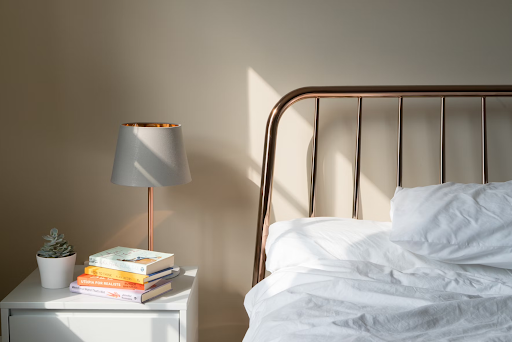Sleeping with Back Pain

Author: Jonathan Warren
How to sleep with back pain & bad back
Although back pain is one of the most common complaints for adults in the UK, the causes are usually hard to pinpoint. This makes it a difficult condition to treat, and as a result it can turn into a chronic issue for many adults. Not only does back pain affect everyday tasks, including your ability to work effectively, but having back ache in bed can seriously impact your quality of sleep too.
If you suffer from back pain when trying to sleep, there are a number of things that you can do to reduce discomfort at night. These tips have the added bonus of helping prevent your back pain from worsening and managing bad flair ups.
Choosing the right matress for back pain
The first thing you need to do if you experiencing back ache when sleeping is to assess the quality of your mattress. You might have heard that firmer mattresses are better for your back, but in actual fact this depends on the individual. Everyone is a different shape and size, and everyone sleeps differently, so what helps one person’s back may worsen another’s.
The perfect mattress should distribute your weight evenly and ensure your spine is aligned in the correct way. For side sleepers, a medium mattress can be ideal as it supports the spine while moulding to the body slightly to relieve pressure off your shoulders and hips. For those who sleep on their back, medium-firm helps to keep the back straight during sleep which can prevent back pain. Your weight and size can impact which mattress would be best suited; someone with a larger build may require an extra firm mattress for added support.
The most important thing is to invest in a high-quality mattress, and to test different ones out. Latex and memory foam can be good options to try, as are a lot of the specialist orthopaedic mattresses available today.
In addition to choosing the right mattress for back pain, it’s also important to make sure you have high quality, suitable pillows. As a general rule, a good pillow will help you maintain your natural posture and support the spine. They should keep their shape after use and be adaptable for different positions. It’s recommended you change your pillows every 12-18 months.
The best sleep positions to help with back pain
How you sleep can have a huge impact on your back, and if you find you suffer from lower pack pain first thing in the morning or while lying in bed, it could very well be the way you’re positioned. Changing your sleep position can help to manage and even eliminate backache.
There is no one universal sleep position that is recommended, but the following can all help alleviate back pain. It’s worth trying out a few to see which works for you.
Sleep on your back
Sleeping on your back is generally considered the healthiest way to sleep, as it spreads your weight across a larger surface and minimises pressure points. Back sleepers also have a good alignment of the head, neck and spine which keeps the muscles from overcompensating while you sleep.
If you experience lower back pain while sleeping on your back, you might benefit from the additional support of a small pillow under the knees as this helps maintain the natural curvature of the spine.
Sleep in the foetal position
Sleeping in the foetal position on your side opens up the space between the vertebrae on your spine, which can relieve back pain and discomfort while sleeping. This is particularly true for those who suffer with a herniated disc – a condition where the soft cushions between the vertebrae and the spine are pushed out of place, causing nerve pain.
To adopt this position, begin by lying on your back then roll over onto your side. Tuck your knees towards your chest and curl your torso in towards your knees. If you sleep in this position regularly, it is a good idea to switch sides from time to time to avoid imbalance or soreness on one side.
Sleep on your side with pillows between legs
If you find sleeping on your side or the foetal position the most comfortable way to sleep, but still struggle with back pain at night, placing a pillow between your legs can relieve discomfort. Sleeping on your side can strain the lower back as the hips are at an unusual alignment. The pillow helps to raise the upper leg, restoring alignment to the hips, pelvis, and spine, reducing pain and inflammation.
Sleep on your front
Sleeping on your stomach is normally considered the worst way to sleep for back health, and is not suitable for someone who suffers from neck pain. However, when all other positions fail, this may bring relief to lower back pain when lying in bed as laying on your front can extend your spine and improve the curvature of your back. Sleeping on the front may also benefit people with a herniated disc or a degenerative disc disease.
Place a pillow underneath the stomach and hips to ensure optimum alignment if you want to avoid soreness in the morning. And try sleeping with your face down if you want to reduce stress on your neck area.
Other tips to reduce back pain when sleeping
By upgrading your mattress and adopting a back-friendly sleep position, you should be able to reduce the back pain you experience at night. Taking a holistic approach to managing back pain can help improve your symptoms even further.
Take your time in the morning
Getting in and out of bed slowly is essential in preventing an onset of morning back pain and stiffness. Overnight, spinal discs decompress and as a result contain more fluid; this excess fluid only leaves the discs after a period of being in an upright position and can make the back more sensitive. Taking it easy when getting up and ready is important as it takes some time for your back to return to normal.
Have a sleep schedule
Although it’s tempting to sleep in when you’re tired or spend a lazy day in bed, spending too long lying down can aggravate back problems. Maintaining a strict sleep schedule and being more active can help to reduce stiffness and other back-related issues.
Being more active in the day
Many adults lead sedentary lifestyles due to having cars and desk jobs, and this can lead to back issues in the first place. Poor posture in particular can cause bad back pain over time and will need to be corrected.
Alternating between standing and sitting at work, making time for exercise and stretches, and practising good posture can all make a huge difference in the health of your back.



